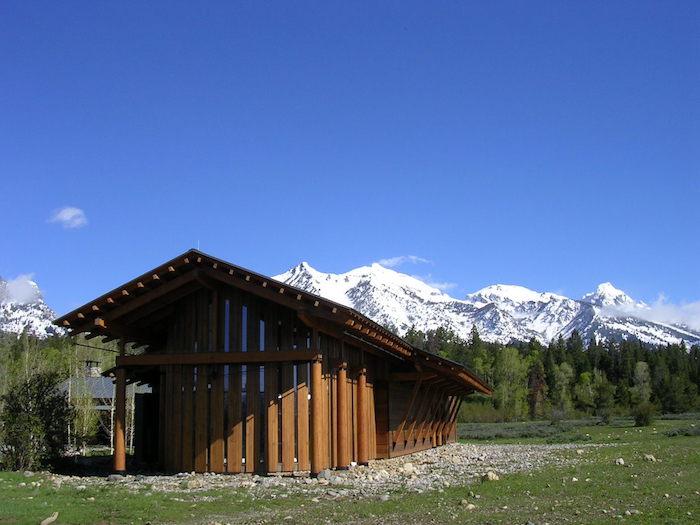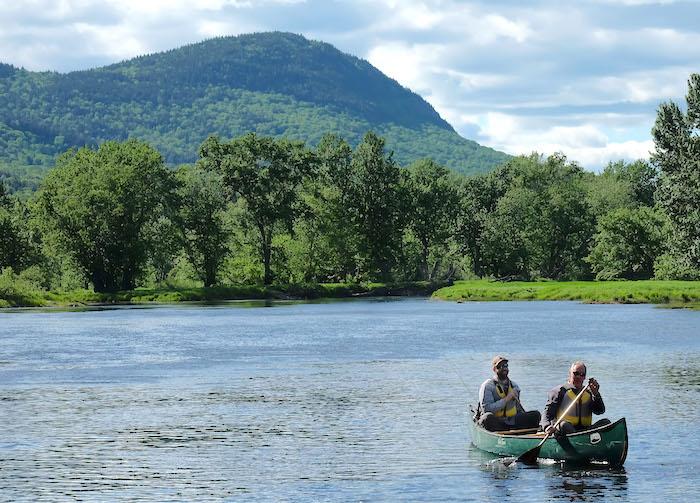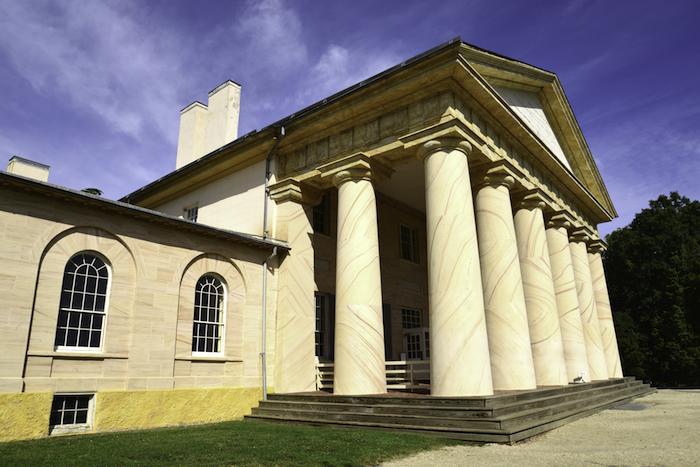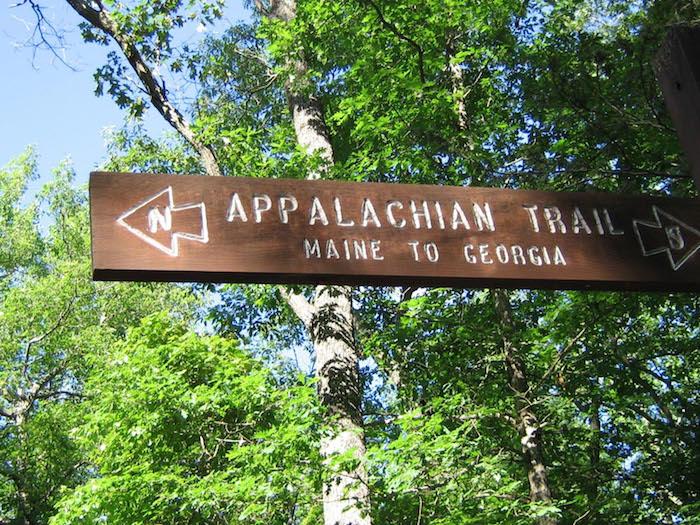
The Laurance S. Rockefeller Preserve at Grand Teton National Park/NPS
“How we treat our land, how we build upon it, how we act toward our air and water, will in the long run tell what kind of people we really are.”
Those words, spoken by philanthropist Laurance S. Rockefeller, are now inscribed at the nature preserve that bears his name at Grand Teton National Park in Wyoming. Once a private ranch retreat for the Rockefeller family, over time the family donated the land to the National Park Service, in keeping with their long tradition of supporting and donating to the national parks. With the final parcel turned over in 2001, this landscape of aspen groves, meadows, and mountain vistas has been protected in perpetuity.
Private philanthropy has always been an essential underpinning of the national parks. Members of the Rockefeller clan gave millions to create, protect, or expand Acadia, Grand Teton, Great Smoky Mountains, Yosemite, and other national parks--as well as an endowment to launch the National Park Foundation, the Park Service’s official charitable partner. The Mellon family helped to establish Cape Hatteras and Cumberland Island national seashores, and protect Rocky Mountain and Redwood national parks. Even the founding of the National Park Service itself was enabled by the wealth and connections of its first director, self-made millionaire Stephen Mather.
Today, major donations continue to allow massive rehabilitation and conservation projects to happen that might not be funded otherwise, from the creation of the Katahdin Woods and Waters National Monument in Maine to the recent and ongoing upgrades of the Washington Monument and Arlington House (the Robert E. Lee Memorial) in the National Capital Region. With NPS facing a nearly $12 billion maintenance backlog, the parks’ relationships with private foundations and donors are more critical than ever to help fill the gaps created by chronic underfunding.
“Private philanthropy started the parks,” says Ame Hellman, senior vice president of philanthropy for the National Park Foundation. “It’s been a part of the story since day one. The Rockefellers, the Roosevelts, the Mellons…so many great American philanthropists created dozens of parks. Today, we have equally generous philanthropists.”
But private involvement in the national parks has raised concerns as well. In 2016, when the NPS was revising its policy on philanthropy, called Director’s Order 21, there was an ensuing outcry that private corporations or donors might have undue influence on public lands, such as through naming rights (a charge that NPS addressed in the final policy statement, saying that naming rights are prohibited by public law and will remain so). Private donations to marquee sites also raise questions as to whether less-well-known parks and projects are getting the same level of attention, or whether the emphasis on private philanthropy lets Congress “off the hook” for inadequately funding the park system.

Interior Secretary Ryan Zinke (right) was given a tour of Katahdin Woods and Waters NM by Lucas St. Clair, whose family donated the land for the monument/DOI
“Philanthropy has an incredibly important role in the national parks, but we have to remember that it’s not the only thing,” says philanthropist Lucas St. Clair, president of Elliotsville Plantation, Inc., and the son of Burt’s Bees co-founder Roxanne Quimby. The Quimby family was the force behind the donation and creation of Katahdin Woods and Waters, and St. Clair continues to support the monument and other parks through funding and advocacy. “The government needs to play its role,” he says. “It’s really a collaboration.”
To strike a balance among needy sites, NPF has worked to become more strategic in its fundraising efforts in the last five years, Hellman says. In 2016, to coincide with the NPS Centennial, the foundation launched its Centennial Campaign for America’s National Parks, which is on track to exceed its $500 million fundraising goal by the end of this year. The campaign included the wildly successful #FindYourPark campaign, which was a hit with park enthusiasts, particularly millennials--the next generation of donors.
“There is so much need, and we try to remain both donor-centric and strategic and system wide in our efforts,” Hellman says. “There are some amazing things happening on the ground in every national park or monument. And we continue to keep our nose to the grindstone.”
People are usually moved to donate because of some deeply felt personal experience, Hellman says. One such donor, David Rubenstein, has had a particularly dramatic impact on parks in the National Capital Region. The product of a blue-collar upbringing in Baltimore, Rubenstein made his fortune running a private equity firm in Washington, D.C., surrounded by the iconic monuments on the National Mall. A few years ago, Rubenstein began working with the NPF on a sustained program he calls “patriotic philanthropy,” donating $7.5 million to restore the earthquake-damaged Washington Monument, more than $5 million to preserve the U.S. Marines’ “Iwo Jima” Memorial, nearly $19 million to restore the Lincoln Memorial, and more than $12 million to restore Arlington House--among other major donations.
For NPS managers, this kind of money means projects can proceed that might never get off the ground waiting on federal appropriations alone. These gifts can also be leveraged to attract additional donations and grant money. In the case of Arlington House, for example, Rubenstein’s gift paved the way for a Save America’s Treasures grant as well. “Volunteerism and patriotic philanthropy provide a level of excellence that the [NPS] could not achieve without those who are willing to donate their hard earned money and valuable time,” said Alexcy Romero, superintendent of George Washington Memorial Parkway, which encompasses Arlington House, in a prepared statement (both Romero and Rubenstein declined interview requests).
A personal connection to Maine’s interior wilderness also led to what Hellman calls the Quimby family’s “life’s work”--the protection of Katahdin Woods and Waters.

The Arlington Memorial in Washington, D.C., is being restored thanks to private philanthropy/Wikimedia Commons
“There was a time in my mom’s life and both my sister and my life when we didn’t have much,” St. Clair says. “Through my mother’s success in business, we have more resources, and since we have more, we feel that we should give more and help those who don’t have as much as we do. One of the most important things we can do is create those outdoor places and encourage people to get out in nature. It’s something I feel we’re losing touch with. The urbanization and mechanization are leading us away from an inherent understanding and appreciation of the outdoors.”
St. Clair and his family’s foundation do more than provide funds; they are continuing to reach out to other partners and local communities to build conservation capacity and support for the monument. (St. Clair even ran for Congress earlier this year. He lost in the primary, but plans to run again.) The strategy seems to be working. After Interior Secretary Ryan Zinke visited Katahdin as part of the department’s national monument review process, he left it untouched, even as other sites, such as Bears Ears National Monument in Utah, were targeted for reduction.
For every big-name privately funded project, countless other donors are also making a difference for parks on a smaller but still-significant scale. NPF’s Hellman points to Roger and Sue Gendron, who live a few blocks from Meridian Hill Park, an NPS unit in Washington, D.C., where they like to walk their dogs. They decided to make protecting the urban park a personal mission and donated nearly $300,000 for repair projects. “They represent a great example of local philanthropists who are supporting NPS’s deferred maintenance needs,” Hellman says. Their gift will be used to enhance the existing restoration of the park’s Lodge House and will replace the armillary sphere (a globelike celestial model) that once graced the site.
“We are seeing a growing interest in private philanthropy,” Hellman says. “We hope to build capacity among our partner organizations, including the more than 200 local and national park friends groups. I hope the tide will rise and lift all boats, and that we can raise more money collaboratively across the board.”
One regionally focused group that is grappling with similar issues is the Appalachian Trail Conservancy, a private membership organization devoted to protecting and maintaining the 2,180-mile Appalachian National Scenic Trail, which crosses 14 states from Maine to Georgia. ATC’s new president and CEO, Suzanne Dixon, has made it her mission to build support among a broad spectrum of trail lovers for both fundraising and volunteering purposes. The Appalachian Trail alone represents some $20 million of the NPS backlog, she says, so the needs are great all along the footpath. She is hoping to broaden awareness of the trail’s natural, historical, and cultural value to private donors and members of Congress alike, frequently pointing out to audiences that the trail is the largest remaining tract of contiguous undeveloped land on the Eastern Seaboard.

Private donations, and sweat, keep the Appalachian National Scenic Trail maintained/USDA
“Private philanthropy is more important than ever, and we do enjoy a great deal of support, but that still doesn’t completely protect the trail from budget cuts, deferred maintenance, and government shutdowns,” Dixon says. “Private donations, corporate philanthropy, and our volunteers all play a massive role. Our power is in the networks we build.”
Although the trail benefits greatly from donations, Dixon says that the organization has calculated that their volunteers have contributed $5.6 million worth of staff-hours to the trail annually (proving that you don’t have to be a Rockefeller or a Rubenstein to make a difference).
Laurance Rockefeller once said, “I profoundly believe that the art of living is the art of giving. You’re fulfilled in the moment of giving, of doing something beyond yourself. That’s the moment of truth.”
Private donors are certainly doing their part for the national parks, protecting, enhancing, and expanding them for future generations. It’s an open question whether Congress is adequately doing theirs.
Support for this reporting was provided by The Pew Charitable Trusts
Previous articles in this series:
Traveler Special Report: Closing The National Park System's Maintenance Backlog
Traveler Special Report: Some Friends Groups Asked To Provide "Margin Of Survival"
Traveler Special Report: Maintenance Woes Blocking Access To Parts Of National Park System
Traveler Special Report: Historic Sites And Structures Affected By Maintenance Backlog
Traveler Special Report: Antiquated Wastewater, Sewer Facilities Go Wanting In National Parks
Traveler Special Report: Backlog Of Maintenance Needs Creates Park Risks
Traveler Special Report: Maintenance Backlog Crippling To National Park Roads And Bridges



Comments
This is just one more example of how it's America's PEOPLE -- of all kinds and levels of wealth -- who really Make America Great. As Kim points out, we need to remember that it's not just the Rockefellers, Rubensteins and Quimbys we have to thank for this. It's people who contribute whatever few dollars they can to organizations like National Parks Conservation Association, Yellowstone Forever, or other similar groups. It's the people who volunteer to register campers or man information desks when there aren't enough rangers on the payroll. It's especially the people like the woman I saw cleaning a mess from a picnic area potty in Yellowstone last summer or the family equipped with litter grabbers picking things up in a BLM campground in California who all contribute whatever they can to our parks and so many other needs around our nation.
Hopefully we will survive the efforts of some members of Congress and the current administration and will succeed as we work together to restore and continue our greatness after they are gone.
And we need to VOTE to try to make that happen.
I just visited the Laurance S. Rockefeller Preserve last week and it was nothing short of moving. If only more people were like he was.